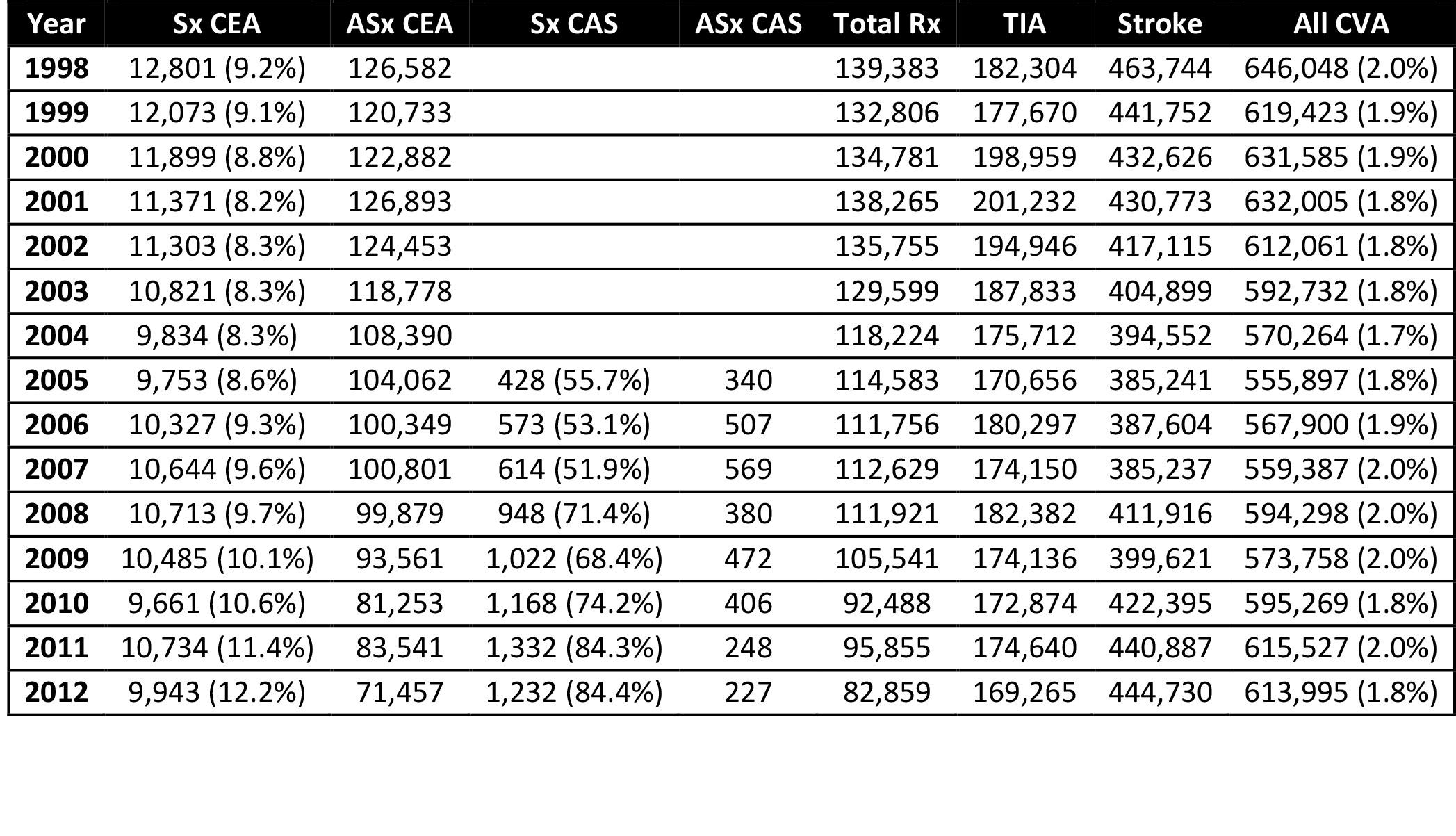Back to 2016 Annual Symposium ePosters
Long-Term Trends in the Incidence and Management of Carotid Artery Disease
Sapan S. Desai, MD, PhD, MBA, James Pan, MD, Douglas Hood, MD, Kim J. Hodgson, MD.
Southern Illinois University, Springfield, IL, USA.
OBJECTIVES:
The contribution of carotid artery disease to the overall incidence of TIA and stroke has not previously been evaluated at a national level. Further, overall trends in carotid endarterectomy (CEA) and carotid artery stenting (CAS) are unknown. The purpose of this study is to better characterize the epidemiology and management of carotid artery disease.
METHODS:
Patients who underwent CEA or CAS were identified through the use of the AHRQ National Inpatient Sample and State Ambulatory Services Database between 1998-2012. Patients were classified as symptomatic or asymptomatic depending on whether they developed TIA or stroke. The total number of patients who had a TIA or stroke were also determined. Demographics and long-term trends were identified. Trend analysis was completed using the Mann-Kendall test and significant for P<0.05.
RESULTS:
Approximately 2% of patients who develop a TIA or stroke undergo CEA or CAS. The overall number of CEA cases has decreased by 44% since 1998, while the proportion of symptomatic patients who undergo CEA has increased from 9.2% to 12.2% (P<0.001). CAS has increased from 768 cases in 2005 to 1,459 cases in 2012, with 84.4% of patients undergoing CAS for symptomatic disease in 2012. Symptomatic patients who undergo CEA or CAS are younger (68.7 +/- 11.4 vs. 70.6 +/- 10.6), more likely to be male (64.7% vs. 57.6%), and have more comorbidities (2.7 +/- 0.7 vs. 1.6 +/- 0.7). Cost of care for symptomatic patients is approximately 220% greater (\,053 vs. 10,898), but the rate of complications and death has decreased for all patients since 1998.
CONCLUSIONS:
CAS utilization has increased significantly between 2005 and 2012, rising from 4.2% of all symptomatic cases to 11.0%. While the overall number of carotid procedures has decreased since 1998, about 2% of all strokes continue to be treated with either CEA or CAS. The contribution margin reported in this population-level study is less than what has been previously reported in smaller studies. 
Back to 2016 Annual Symposium ePosters
|







